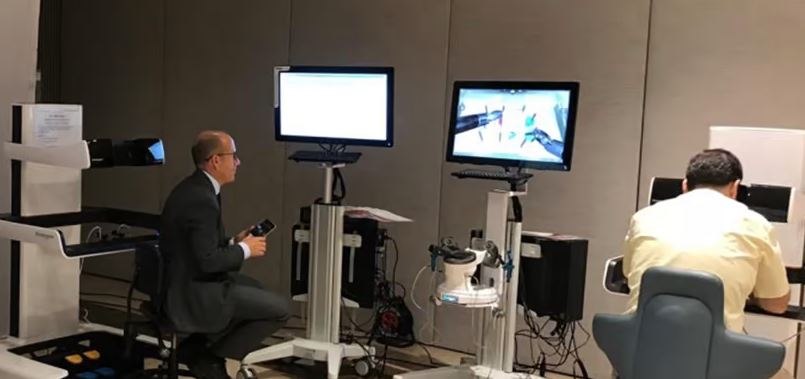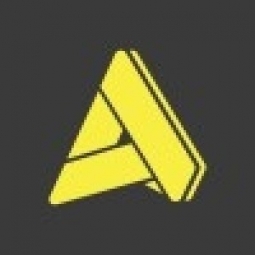Customer Company Size
Large Corporate
Region
- America
Country
- United States
Product
- Pivotal CRM
Tech Stack
- Microsoft Excel
- .NET
Implementation Scale
- Enterprise-wide Deployment
Impact Metrics
- Productivity Improvements
- Cost Savings
Technology Category
- Functional Applications - Enterprise Resource Planning Systems (ERP)
Applicable Industries
- Education
Applicable Functions
- Sales & Marketing
- Business Operation
Services
- System Integration
About The Customer
Babson College is an independent, not-for-profit institution that is accredited by the Association to Advance Collegiate Schools of Business (AACSB), the New England Association of Schools and Colleges, and the European Quality Improvement System (EQUIS). Founded in 1919 by successful investment banker and entrepreneur Roger Babson, Babson College has become one of the world’s leading business schools, consistently ranked among the likes of Harvard and Wharton. Located in Babson Park, MA, Babson College has three major educational divisions and several departments within each division. The majority of Babson Executive Education’s revenue comes from corporate clients seeking custom educational solutions for their senior management, designed to address specific problems the company is facing; these customers include the US Navy and several Fortune 100 companies. The remaining revenue is made up by open enrollment in standard executive education course offerings, research memberships, and the Consortium, a collaboration of non-competing global companies that partner with Babson Executive Education to design and deliver an executive development program that meets the unique management development needs of their organizations.
The Challenge
Babson Executive Education, a division of Babson College, faced challenges with data fragmentation and redundancy. The organization had multiple databases for customer information, which were manually updated, leading to time delays, errors, and inconsistencies. The registration system was separate from the database used by sales and marketing staff for opportunity management, leading to data gaps. Reporting was also arduous due to the disparity between the systems. Babson Executive Education realized it needed a central system and database that could provide one unified view of customers and prospects to serve those clients more effectively and reduce redundancies.
The Solution
Babson Executive Education implemented Pivotal CRM, a system that provided a centralized customer and prospect database and more streamlined administrative processes. The implementation brought all of Babson Executive Education’s customer and prospect information into a single centralized system, creating a common and consistent view. This information is now accessible to the many different users who need it: the sales and marketing groups, operations and administration staff, IT personnel, and management. Even with customizations, Babson Executive Education deployed the system in a very short period of time, quickly achieving a significant increase in operational efficiency and a clearer view of prospect and sales data that improved the planning of their educational calendar. Reports that used to take several days to pull together now take only a few hours.
Operational Impact
Quantitative Benefit

Case Study missing?
Start adding your own!
Register with your work email and create a new case study profile for your business.
Related Case Studies.

Case Study
Revolutionizing Medical Training in India: GSL Smart Lab and the LAP Mentor
The GSL SMART Lab, a collective effort of the GSL College of Medicine and the GSL College of Nursing and Health Science, was facing a challenge in providing superior training to healthcare professionals. As clinical medicine was becoming more focused on patient safety and quality of care, the need for medical simulation to bridge the educational gap between the classroom and the clinical environment was becoming increasingly apparent. Dr. Sandeep Ganni, the director of the GSL SMART Lab, envisioned a world-class surgical and medical training center where physicians and healthcare professionals could learn skills through simulation training. He was looking for different simulators for different specialties to provide both basic and advanced simulation training. For laparoscopic surgery, he was interested in a high fidelity simulator that could provide basic surgical and suturing skills training for international accreditation as well as specific hands-on training in complex laparoscopic procedures for practicing physicians in India.

Case Study
IoT platform Enables Safety Solutions for U.S. School Districts
Designed to alert drivers when schoolchildren are present, especially in low-visibility conditions, school-zone flasher signals are typically updated manually at each school. The switching is based on the school calendar and manually changed when an unexpected early dismissal occurs, as in the case of a weather-event altering the normal schedule. The process to reprogram the flashers requires a significant effort by school district personnel to implement due to the large number of warning flashers installed across an entire school district.

Case Study
Implementing Robotic Surgery Training Simulator for Enhanced Surgical Proficiency
Fundacio Puigvert, a leading European medical center specializing in Urology, Nephrology, and Andrology, faced a significant challenge in training its surgical residents. The institution recognized the need for a more standardized and comprehensive training curriculum, particularly in the area of robotic surgery. The challenge was underscored by two independent studies showing that less than 5% of residents in Italian and German residency programs could perform major or complex procedures by the end of their residency. The institution sought to establish a virtual reality simulation lab that would include endourological, laparoscopic, and robotic platforms. However, they needed a simulator that could replicate both the hardware and software of the robotic Da Vinci console used in the operating room, without being connected to the actual physical console. They also required a system that could provide both basic and advanced simulation training, and a metrics system to assess the proficiency of the trainees before they performed surgical procedures in the operating theater.

Case Study
Edinburgh Napier University streamlines long-distance learning with Cisco WebEX
• Geographically dispersed campus made in-person meetings costly and inconvenient.• Distance-learning programs in Malaysia, India, and China required dependable, user-friendly online tools to maximize interaction in collaborative workspaces.• Virtual learning environment required a separate sign-in process, resulting in a significant administrative burden for IT staff and limited adoption of collaboration technology.

Case Study
8x increased productivity with VKS
Before VKS, a teacher would spend a lot of time showing a group of 22 students how to build a set of stairs within a semester of 120 hours. Along with not leaving the teacher much time to provide one-on-one support for each student to properly learn carpentry, it also left a considerable amount of room for error. Key information would be misinterpreted or lost as the class was taught in the typical show-and-tell way.

Case Study
Scalable IoT Empowering GreenFlex's Sustainable Growth
GreenFlex, a company that supports sustainable development, decarbonization, and energy efficiency, faced several challenges in its quest to expand its business. The company needed to deploy a robust and sustainable IoT technology to support its growth. It was crucial for them to monitor and control devices at customer sites in a safe and reliable manner. They also needed to integrate devices across a range of communication protocols and gather and act on data to meet efficiency targets. GreenFlex had previously built IoT capabilities into its digital platform, GreenFlexIQ, to monitor and manage customer sites remotely. However, they soon realized that they needed a new platform to support their ambitions. They needed a platform that could scale to connect more devices for production management and make it easier for the operations team to manage devices in the field.







